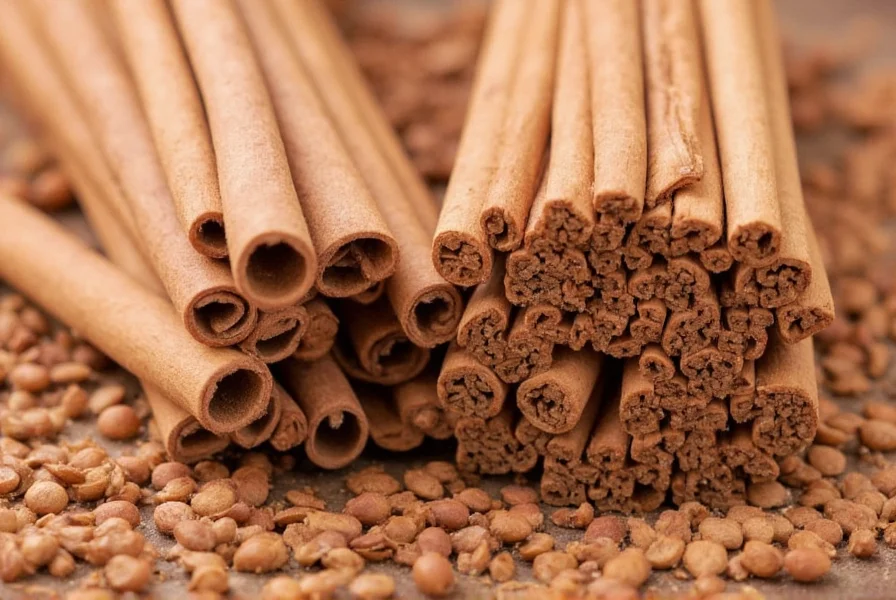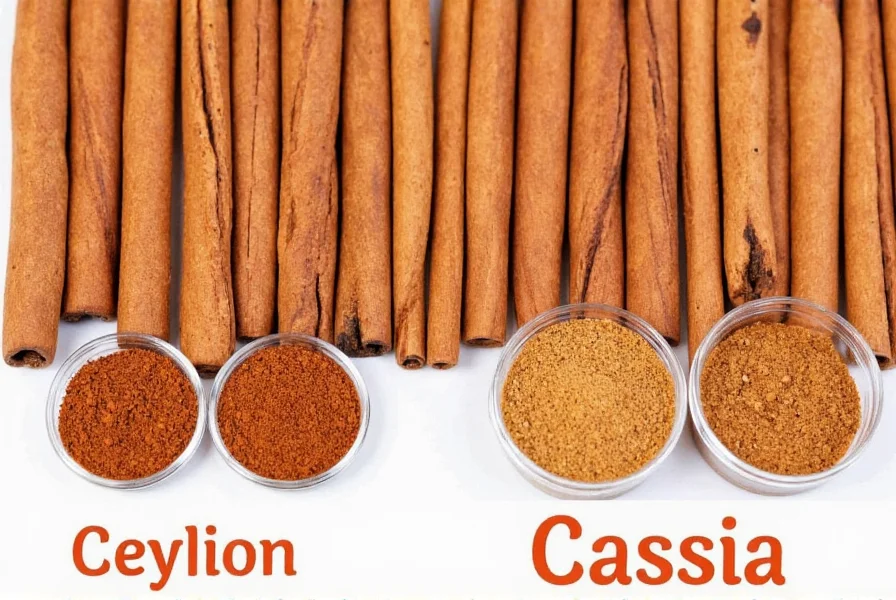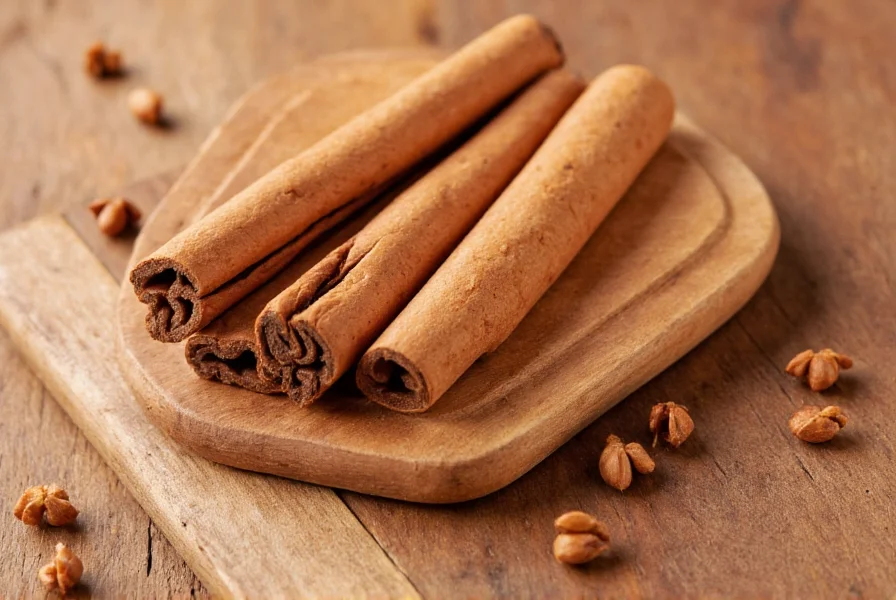There is no single "best" cinnamon for all purposes. Ceylon cinnamon (Cinnamomum verum) is generally considered the healthiest option for regular consumption due to its significantly lower coumarin content, while Cassia cinnamon offers a stronger, more familiar flavor preferred in many baking applications. The optimal choice depends on your specific needs: Ceylon for daily health-focused use, Cassia for robust flavor in occasional recipes.
When exploring the world of cinnamon, understanding the distinct varieties and their properties is essential for making informed choices. This comprehensive guide examines the scientific evidence and culinary applications to help you select the right cinnamon for your needs.
Understanding Cinnamon Varieties
Cinnamon isn't a single spice but rather several related species with distinctive characteristics. The two primary types found in kitchens worldwide are Ceylon cinnamon and Cassia cinnamon, each with unique properties that affect flavor, health benefits, and safety profiles.

Ceylon vs. Cassia: Key Differences
Ceylon cinnamon, often called "true cinnamon," originates from Sri Lanka and southern India. It features thin, delicate quills that resemble layered scrolls. Cassia cinnamon, which accounts for approximately 90% of cinnamon sold in the United States, comes primarily from China and Indonesia and has thicker, harder sticks with a single rolled layer.
| Characteristic | Ceylon Cinnamon | Cassia Cinnamon |
|---|---|---|
| Scientific Name | Cinnamomum verum | Cinnamomum cassia |
| Coumarin Content | Approximately 0.017g/kg | Approximately 6.5g/kg |
| Flavor Profile | Milder, sweeter, more complex | Stronger, spicier, more intense |
| Color | Lighter tan | Deeper reddish-brown |
| Texture | Soft, brittle, multi-layered quills | Hard, dense, single thick layer |
Health Considerations: The Coumarin Factor
The most significant health difference between cinnamon varieties involves coumarin content. Coumarin, a naturally occurring compound, can cause liver damage in sensitive individuals when consumed in large quantities over time. Cassia contains substantially higher levels of coumarin compared to Ceylon—approximately 250 times more according to European Food Safety Authority research.
For regular consumption, especially for those with liver conditions or taking certain medications, Ceylon cinnamon represents the safer choice. The European Union has established maximum coumarin levels in foods, with stricter limits for cinnamon-based products. When searching for the healthiest cinnamon to use daily, Ceylon consistently emerges as the preferred option in scientific literature.
Culinary Applications and Flavor Profiles
Culinary professionals often select cinnamon based on the specific dish requirements. Understanding the difference between true cinnamon and regular cinnamon helps explain why certain recipes specify one variety over another.
Ceylon's delicate, citrusy notes work exceptionally well in:
- Fish and seafood dishes
- Fruit-based desserts
- Delicate pastries
- Traditional Mexican and Middle Eastern cuisine
Cassia's robust, spicy-sweet profile shines in:
- Apple pies and other fruit crisps
- Spice cakes and gingerbread
- Curries and savory spice blends
- Hot beverages like chai
Scientific Research on Cinnamon Benefits
Multiple studies have investigated cinnamon's potential health benefits, including effects on blood sugar regulation, inflammation reduction, and antioxidant properties. Research published in the Journal of the Academy of Nutrition and Dietetics indicates both varieties show promise for supporting metabolic health, though the effective doses differ due to varying compound concentrations.
When researching the best cinnamon for blood sugar management, studies suggest Cassia may provide more immediate effects due to higher concentrations of active compounds, but Ceylon offers a safer profile for long-term use. This creates an important consideration for individuals managing diabetes who wish to incorporate cinnamon regularly.
How to Identify and Purchase Quality Cinnamon
Most grocery stores sell Cassia but label it simply as "cinnamon." To find authentic Ceylon cinnamon:
- Examine the sticks: Ceylon forms delicate, multi-layered quills that crumble easily when bent
- Check the color: Ceylon appears lighter tan compared to Cassia's reddish-brown
- Read labels carefully: Look for "Ceylon," "Cinnamomum verum," or "true cinnamon"
- Consider specialty retailers: Health food stores and online spice merchants often carry authentic Ceylon
When evaluating the cinnamon varieties comparison for quality, consider purchasing whole sticks rather than powder. Whole cinnamon maintains its flavor and potency longer, and you can visually verify the type before grinding. Proper storage in an airtight container away from light preserves freshness for up to one year.

Practical Recommendations for Different Needs
Based on extensive culinary testing and scientific review, here's how to choose the right cinnamon for your specific requirements:
- Daily health supplementation: Ceylon cinnamon (1/2 to 1 teaspoon daily)
- Baking traditional cinnamon rolls: Cassia for authentic flavor profile
- Delicate desserts and fruit dishes: Ceylon for subtle flavor enhancement
- Spice blends for curries: Cassia for robust flavor penetration
- Children's recipes: Ceylon due to lower coumarin content
- Long-term storage: Whole sticks of either variety, properly sealed
For those exploring the cinnamon types for baking, consider keeping both varieties in your pantry. Use Cassia when a strong cinnamon presence is desired, and Ceylon when you want cinnamon notes to complement rather than dominate the flavor profile.
Conclusion: Making Your Cinnamon Choice
The question of which is the best cinnamon ultimately depends on your specific application and health considerations. Ceylon cinnamon offers the safest profile for regular consumption and provides a more nuanced flavor, while Cassia delivers the bold, familiar taste many associate with traditional cinnamon recipes.
By understanding these distinctions and considering your particular needs—whether focused on health benefits, culinary applications, or flavor preferences—you can make informed decisions that enhance both your cooking and wellbeing. The key is matching the cinnamon variety to your specific purpose rather than seeking a single "best" option that works for all situations.
Frequently Asked Questions
Is Ceylon cinnamon really better than Cassia?
Ceylon cinnamon contains significantly less coumarin than Cassia, making it safer for regular consumption. While Cassia has a stronger flavor preferred in many recipes, Ceylon offers a more complex, delicate taste profile and represents the healthier choice for daily use, especially for those with liver concerns or taking certain medications.
How can I tell if I have Ceylon or Cassia cinnamon?
Examine the sticks: Ceylon forms delicate, multi-layered quills that crumble easily when bent, while Cassia has a single thick, hard layer. Ceylon appears lighter tan compared to Cassia's reddish-brown color. If purchasing powder, check the label for "Ceylon," "true cinnamon," or Cinnamomum verum to ensure authenticity.
How much cinnamon can I safely consume daily?
For Cassia cinnamon, limit consumption to 1 teaspoon (about 2.5 grams) daily due to its high coumarin content. Ceylon cinnamon allows for more generous use—up to 1-2 teaspoons daily—because of its significantly lower coumarin levels. Those with liver conditions or taking medications metabolized by the liver should consult their healthcare provider before regular cinnamon consumption.
Does cinnamon really help with blood sugar control?
Research shows cinnamon may help improve insulin sensitivity and lower blood sugar levels, with Cassia generally showing stronger immediate effects due to higher concentrations of active compounds. However, Ceylon offers a safer profile for long-term use. The American Diabetes Association notes that while promising, cinnamon should complement—not replace—standard diabetes management approaches.
Why is Ceylon cinnamon more expensive than regular cinnamon?
Ceylon cinnamon commands a higher price due to more labor-intensive harvesting methods, lower yield per tree, and limited growing regions primarily in Sri Lanka. The delicate quills require careful manual processing, and Ceylon trees produce less bark than Cassia varieties. Despite the higher cost, many chefs and health-conscious consumers consider the superior flavor profile and safety advantages worth the investment for regular use.











 浙公网安备
33010002000092号
浙公网安备
33010002000092号 浙B2-20120091-4
浙B2-20120091-4